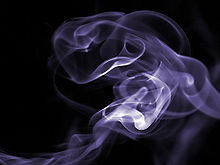**Gas Properties and Characteristics**:
– Elemental gases include hydrogen, nitrogen, oxygen, fluorine, and chlorine.
– Gas particles have weak intermolecular bonds, low density, and viscosity.
– Gases spread out to homogeneously distribute themselves in a container.
– Pressure, volume, number of particles, and temperature describe gas properties.
– Boyle’s law (PV=k) and mathematical tools like Euler equations analyze gas behavior.
**Gas Behavior and Kinetic Theory**:
– Gas particles move freely and randomly, changing direction upon collisions.
– Kinetic theory relates macroscopic properties to kinetic energy per molecule.
– Pressure results from microscopic particle collisions, with temperature quantifying particle motion.
– Brownian motion describes random movement of gas particles in a fluid.
– Van der Waals forces play a key role in determining physical properties of gases.
**Ideal vs. Real Gases**:
– The ideal gas law equation is PV=nRT, suitable for engineering applications.
– Real gases deviate from ideal behavior at extreme pressures and temperatures.
– Real gas effects include compressibility variations, variable heat capacity, and Van der Waals forces.
– Permanent gases have critical temperatures below human-habitable ranges.
– Boyle’s Law, Charles’s Law, Gay-Lussac’s Law, and Avogadro’s Law are fundamental gas laws.
**Gas Laws and Equations**:
– Boyle’s Law establishes the inverse relationship between pressure and volume.
– Dalton’s Law of partial pressures states the total pressure of a gas mixture.
– Compressibility factor adjusts the ideal gas equation for real gases.
– The Reynolds number relates inertial forces to viscous forces in fluid dynamics.
– Viscosity is a measure of molecular stickiness in fluids, essential for boundary layers.
**Historical and Special Topics**:
– The term ‘gas’ was first used by Jan Baptist van Helmont in the 17th century.
– Alternative etymological connections include Ancient Greek and German words.
– Advanced math is used for safety calculations in extreme gas conditions.
– Specific volume, density, and microscopic view of gases are vital concepts.
– Turbulence in fluid dynamics involves chaotic property changes, seen in weather patterns.
Gas is one of the four fundamental states of matter. The others are solid, liquid, and plasma. A pure gas may be made up of individual atoms (e.g. a noble gas like neon), elemental molecules made from one type of atom (e.g. oxygen), or compound molecules made from a variety of atoms (e.g. carbon dioxide). A gas mixture, such as air, contains a variety of pure gases. What distinguishes gases from liquids and solids is the vast separation of the individual gas particles. This separation usually makes a colorless gas invisible to the human observer.

The gaseous state of matter occurs between the liquid and plasma states, the latter of which provides the upper-temperature boundary for gases. Bounding the lower end of the temperature scale lie degenerative quantum gases which are gaining increasing attention. High-density atomic gases super-cooled to very low temperatures are classified by their statistical behavior as either Bose gases or Fermi gases. For a comprehensive listing of these exotic states of matter, see list of states of matter.
